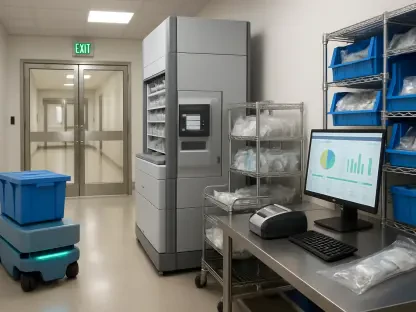As Canadian health systems integrate advanced technologies like electronic medical records (EMR), care coordination platforms, and internet-of-things devices, they are becoming increasingly vulnerable to cyberattacks. These new technologies, while immensely beneficial in improving patient care and operational efficiency, come with heightened privacy and financial risks for patients, providers, and institutions. A recent analysis has shed light on these escalating challenges and proposed a comprehensive four-stage plan to help Canadian physicians and healthcare institutions bolster their cybersecurity defenses.
1. Mitigation
To effectively combat cyber threats, individuals and organizations must prioritize personal cybersecurity practices. Clinicians, whether in large hospitals or private practices, should adopt strong passwords, enable two-factor authentication (2FA) for their logins, and install robust antivirus and virtual private network (VPN) software on their devices. Keeping software up to date with the latest security patches is also essential to ward off potential attacks.Large organizations usually have the resources to provide standardized institutional support for these best practices, ensuring a uniform approach to cybersecurity across their staff and systems. However, for clinicians operating in smaller, private practices, external support might be necessary. They can collaborate with third-party vendors or professional support groups, such as the Ontario Medical Association, to establish a secure, reliable system. Additionally, these practitioners should consider obtaining privacy breach and cyberattack insurance to mitigate the financial impact of potential incidents.Focusing on these personal cybersecurity practices, or cyber hygiene, plays a significant role in the initial mitigation stage. By adopting strong passwords, clinicians can prevent unauthorized access to sensitive health information systems. Two-factor authentication adds an additional layer of security, making it more difficult for cyber attackers to infiltrate accounts even if passwords are compromised. Antivirus and VPN software help in identifying and blocking malicious activities, while regular software updates ensure that known vulnerabilities are patched promptly.
2. Identification
The next critical stage in cybersecurity is the identification of potential threats. Vigilance is key, as clinicians and healthcare institutions must remain alert to abnormal behaviors and signs of cyber threats. This includes suspicious emails, unexpected pop-up warnings, restricted access to files or programs, and new, unrecognized files or software installations. Irregular results from routine malware scans can also indicate a potential breach that needs immediate attention.Phishing emails are a common method used by cyber attackers to gain unauthorized access. Clinicians should be aware of the telltale signs of these scams, which often include unusual email addresses, a sense of urgency, generic greetings, mismatched fonts, and typos. Other red flags include vague or strange email signatures, outdated logos, and strong calls to action, such as opening a link or downloading an attachment. By being able to recognize these phishing attempts, healthcare professionals can thwart many cyberattacks before they cause any harm.Reporting any suspicious or unusual activity is crucial in preventing the escalation of a cyber threat. Promptly notifying the appropriate cybersecurity team or support group can help contain the potential breach and minimize its impact. Comprehensive training programs and awareness campaigns can help clinicians stay informed about the latest cyber threats and appropriate identification techniques, ensuring that the first line of defense remains strong.
3. Reaction
After identifying a threat, the appropriate reaction is essential to mitigate damage effectively. Developing and implementing a well-structured response plan to address detected cybersecurity issues can make a significant difference. This plan should include immediate actions such as isolating infected systems to prevent the spread of malicious software and minimizing the overall impact on the healthcare institution.Coordination among team members is crucial during the reaction phase. Ensuring that each team member understands their role and responsibilities in managing the incident can lead to a more efficient handling of the cybersecurity threat. Regular drills and simulations can prepare teams for real-world cyberattacks, improving their readiness and response capabilities.In addition to isolating affected systems, the response plan should involve a thorough investigation to understand the root cause of the attack. Identifying how the cyber attacker gained access and which vulnerabilities were exploited can provide valuable insights into strengthening the organization’s defenses. Sharing this information with other healthcare institutions can also contribute to a collective improvement in cybersecurity practices across the industry.
4. Restoration
As Canadian health systems embrace cutting-edge technologies like electronic medical records (EMR), care coordination platforms, and internet-of-things (IoT) devices, they face an increasing risk of cyberattacks. While these technological advancements offer substantial benefits in terms of enhancing patient care and operational efficiency, they also bring significant privacy and financial risks to patients, healthcare providers, and institutions.A recent study has highlighted these escalating challenges. The integration of these sophisticated systems means that sensitive patient information is more accessible than ever, making it a prime target for cybercriminals. The financial implications are also substantial, with the cost of data breaches potentially running into millions of dollars, affecting not just individual patients but the healthcare institutions themselves.To address these pressing issues, experts have recommended a comprehensive four-stage plan aimed at strengthening cybersecurity defenses for Canadian physicians and healthcare institutions. This plan includes robust initial assessments to understand vulnerabilities, implementing advanced security protocols, continuous monitoring for potential threats, and ongoing education and training for healthcare professionals on cybersecurity best practices. By adopting this multi-faceted approach, Canadian healthcare systems can better protect themselves from the growing menace of cyber threats, ensuring both patient safety and data integrity.









